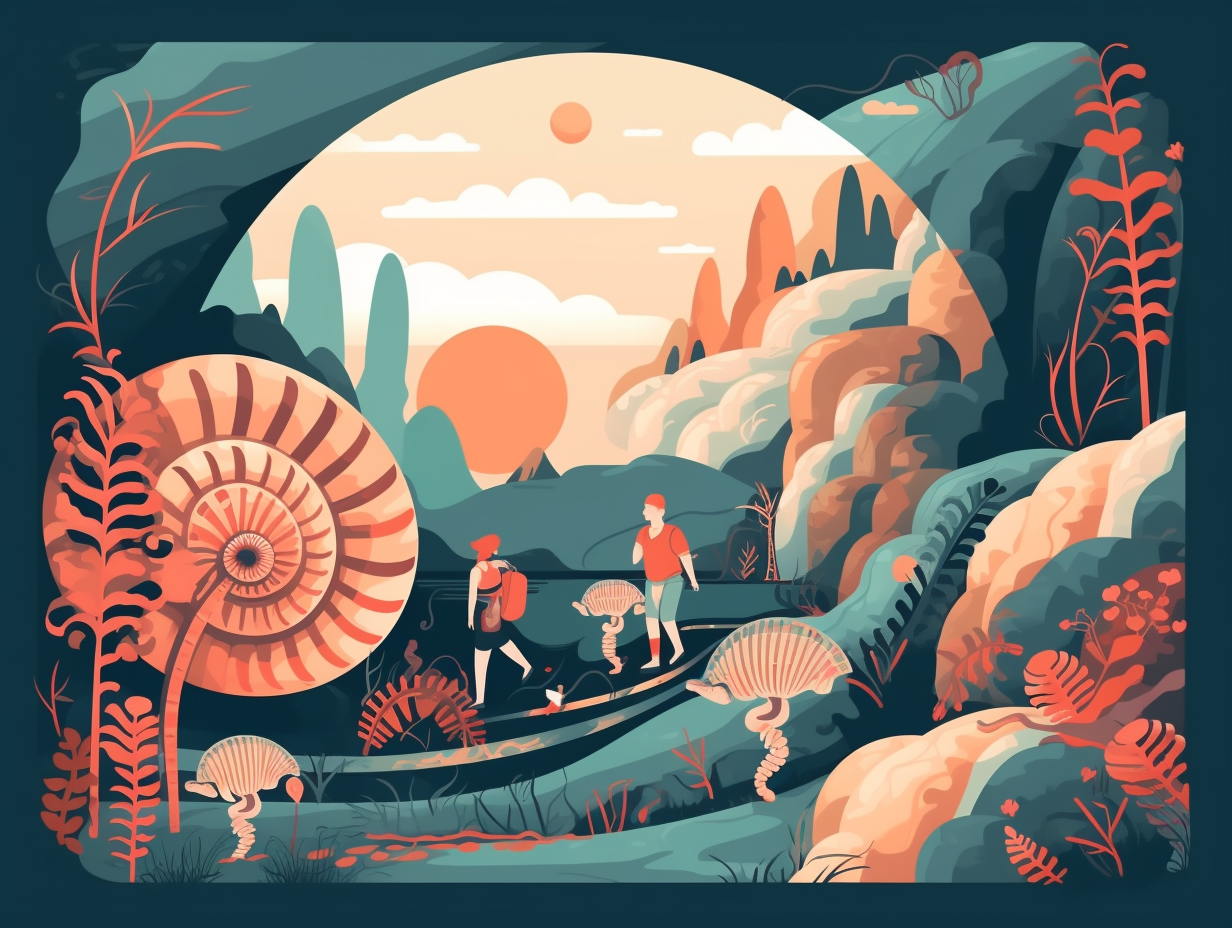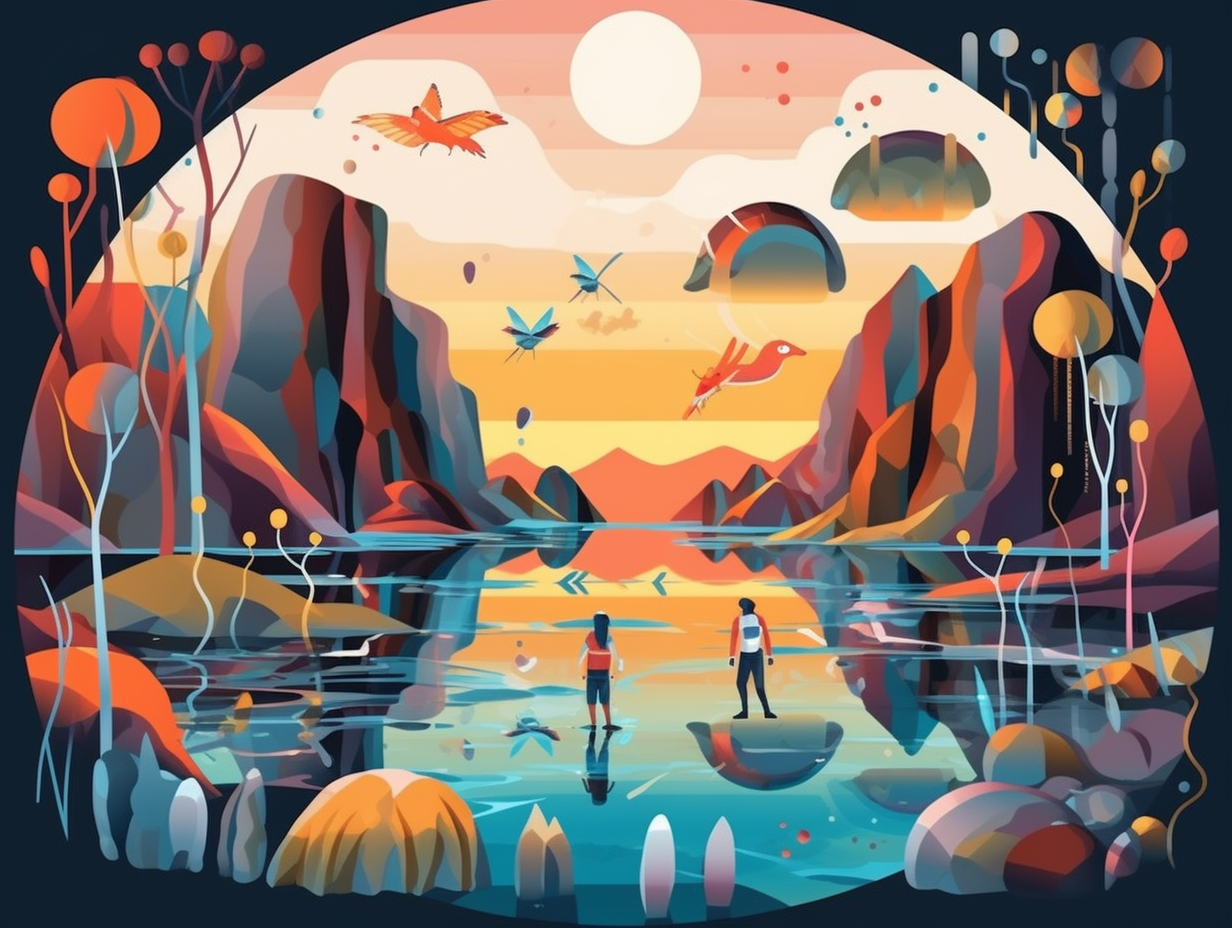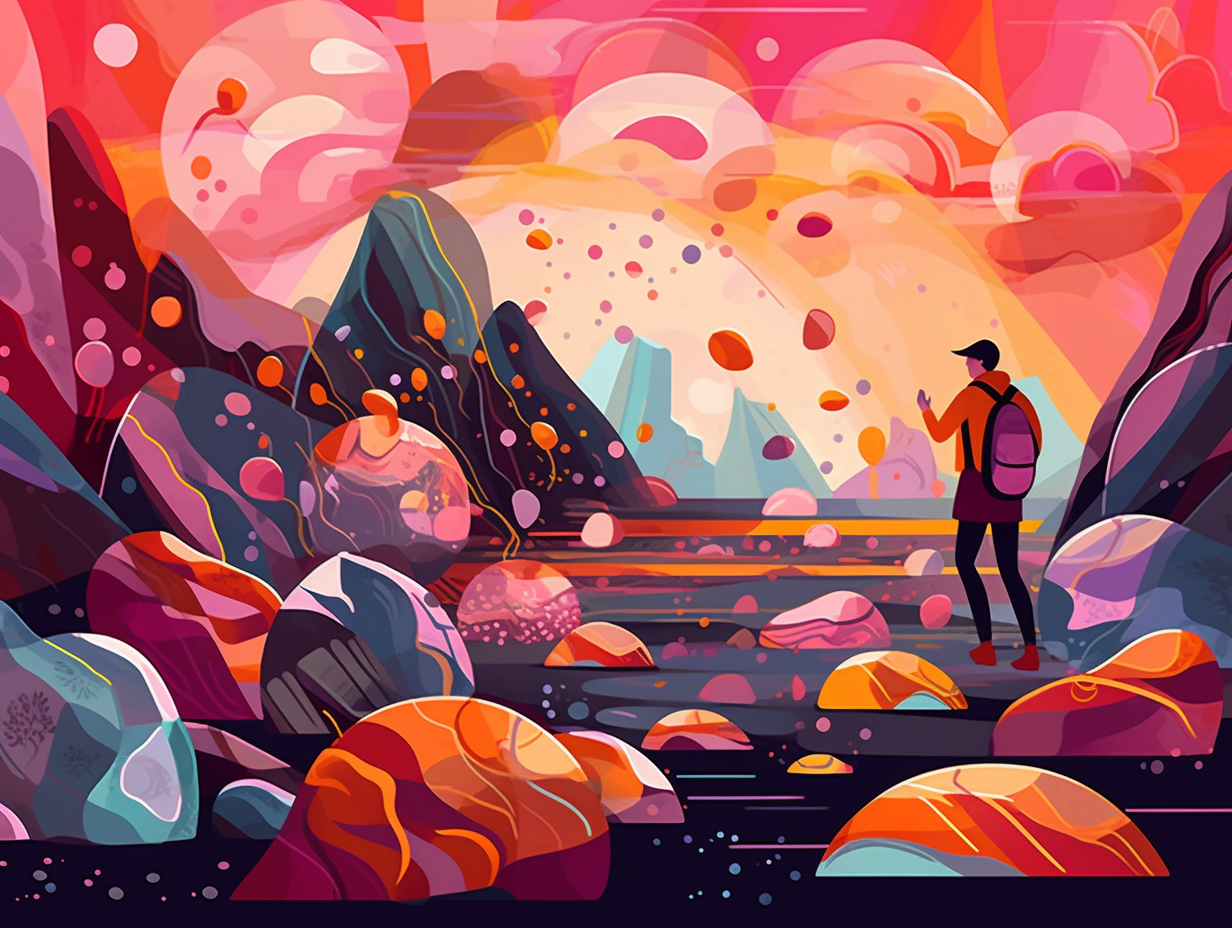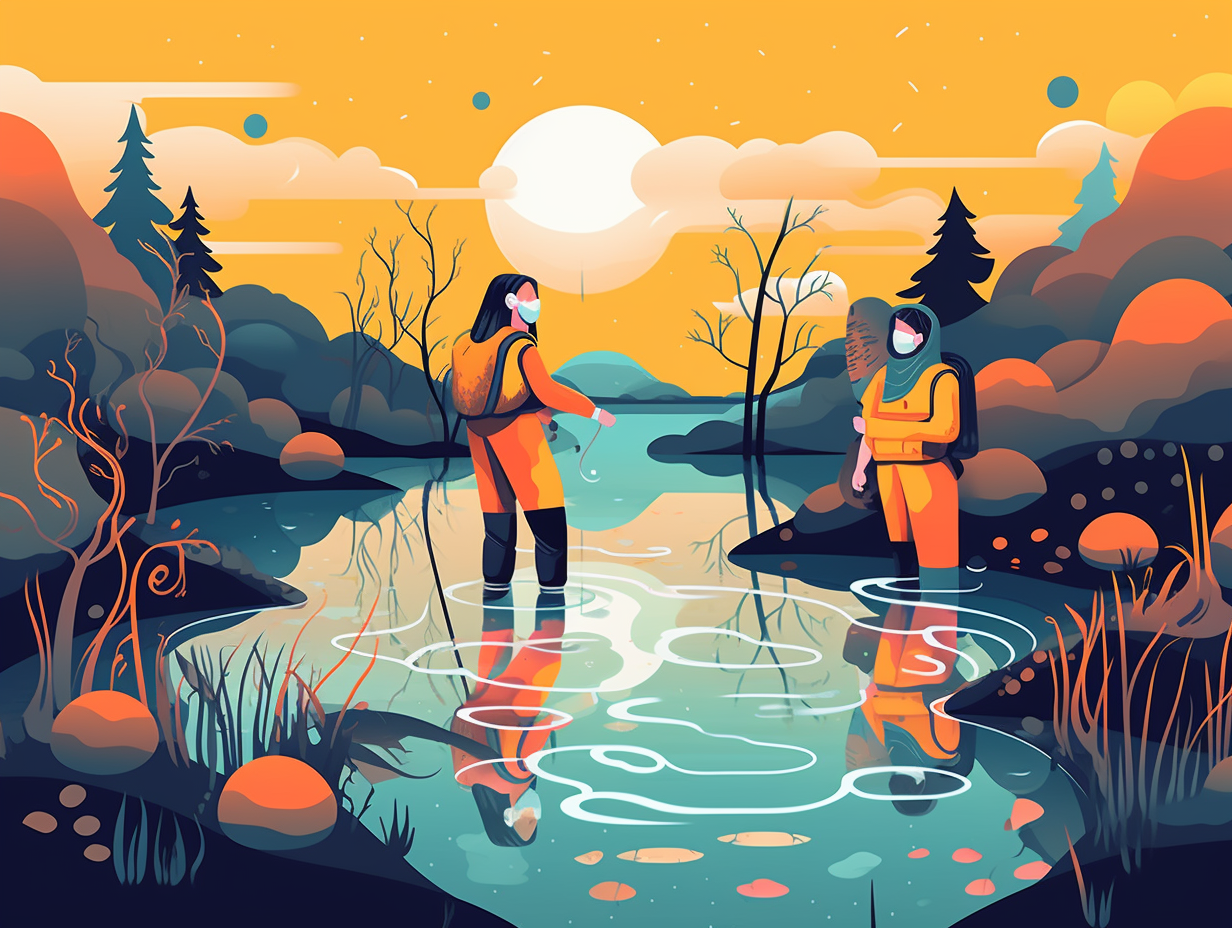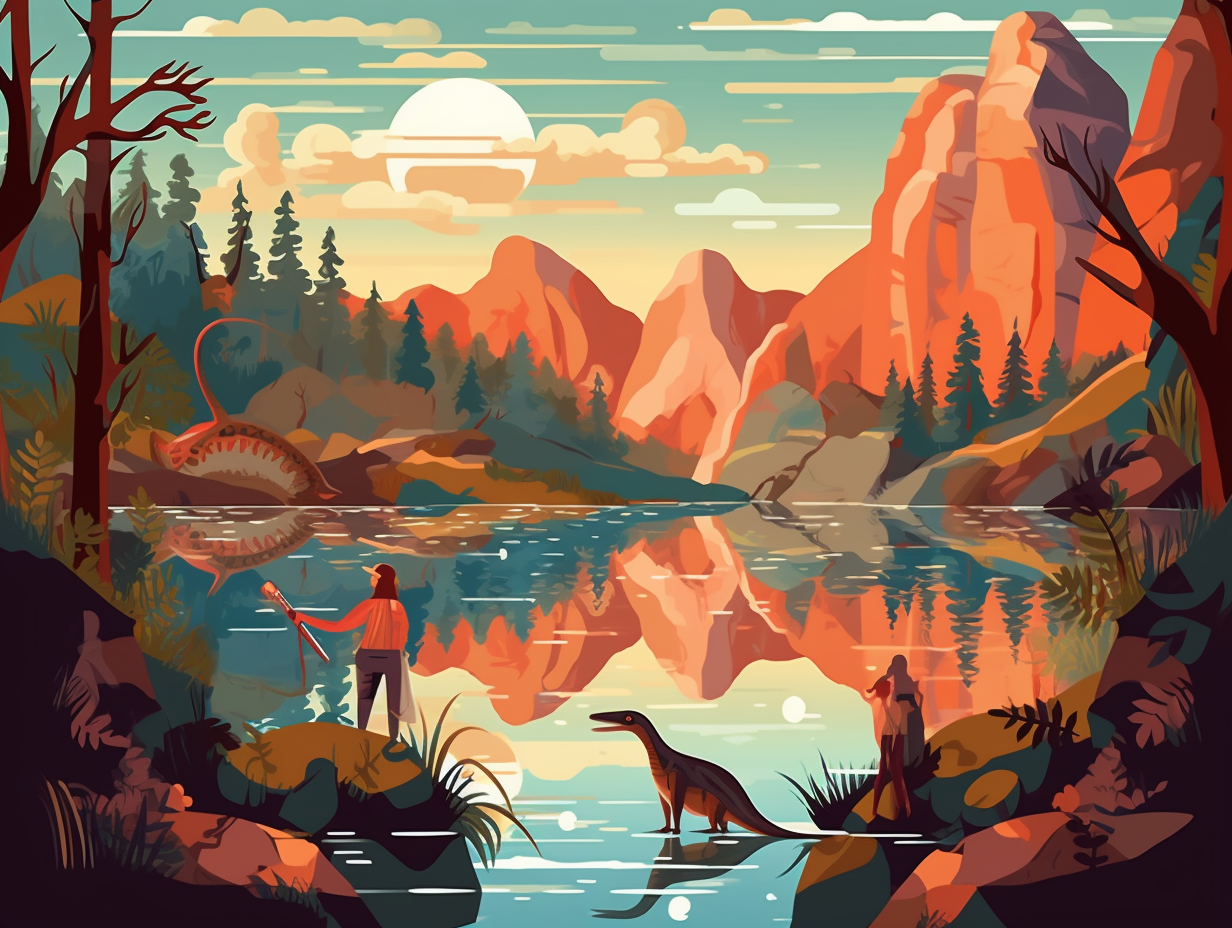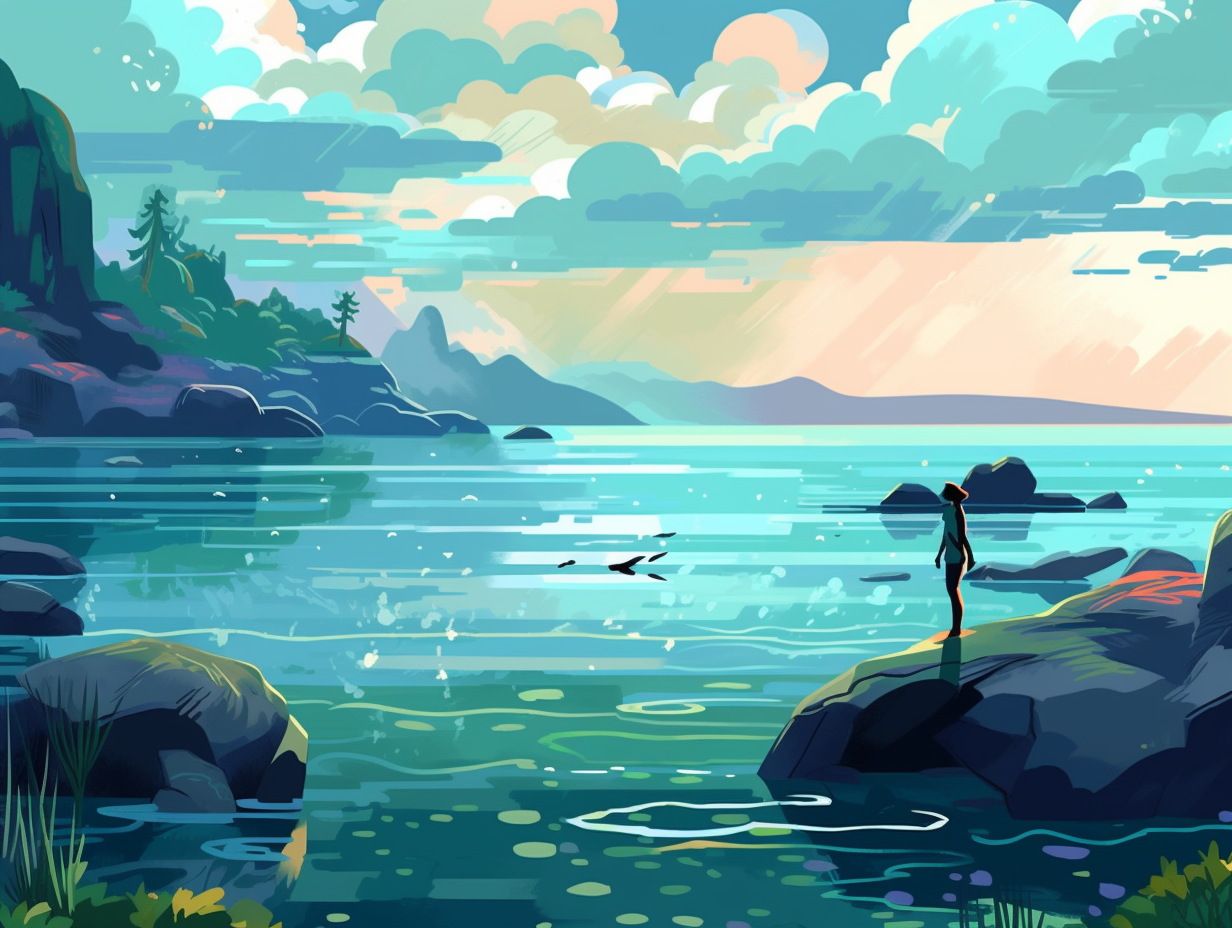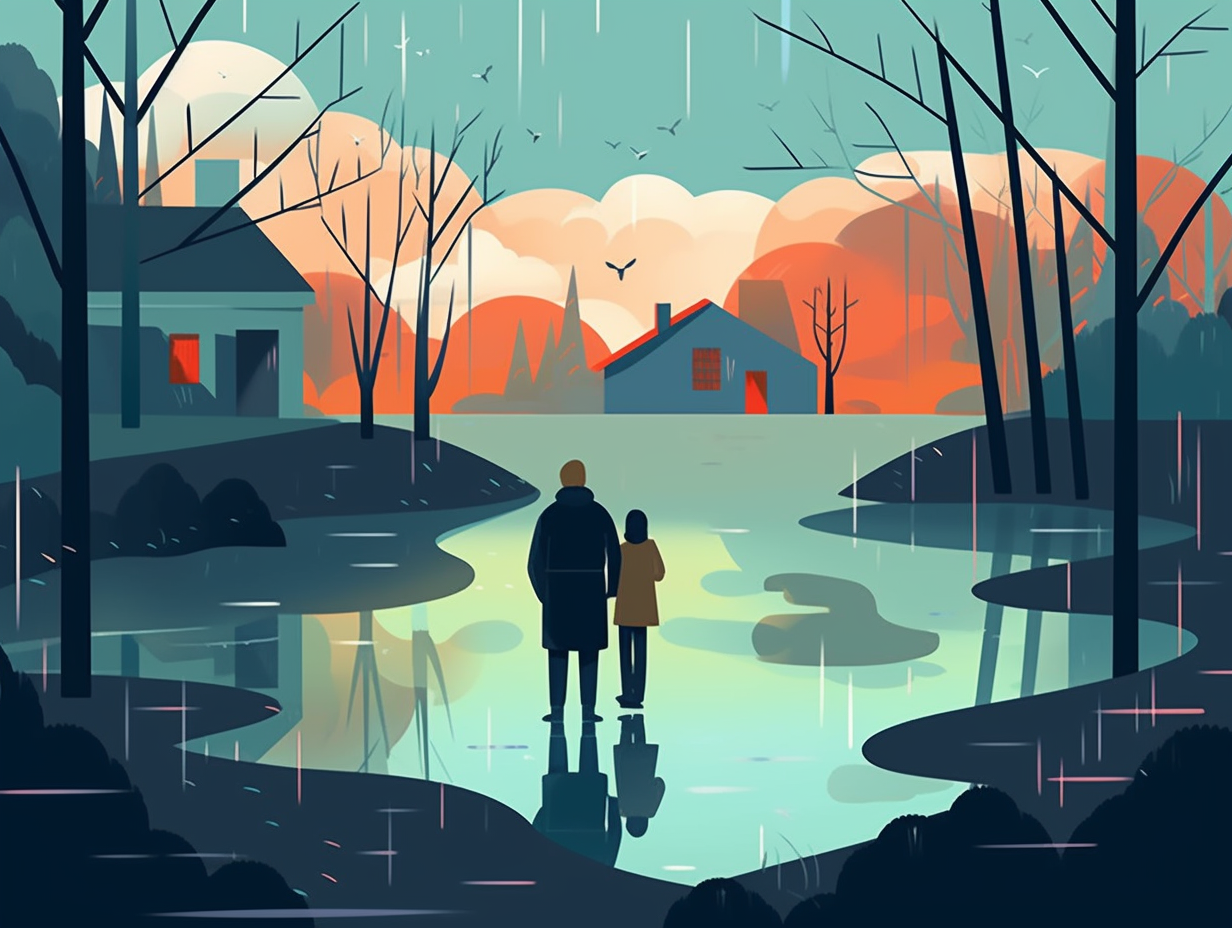Discover the Cambrian Period: Top 9 Fun Facts That Will Blow Your Mind!
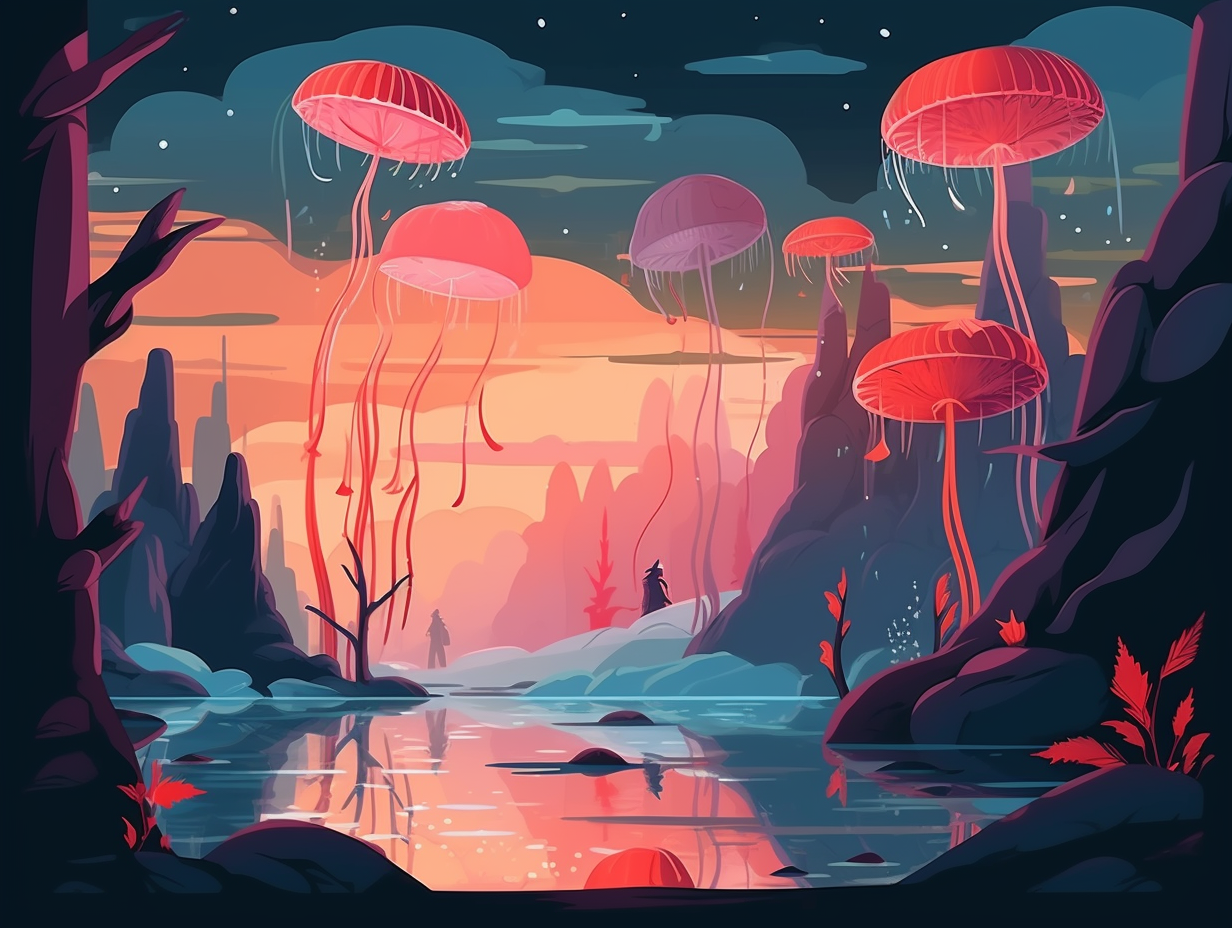
1. Underwater Fashion Explosion
In a time when trilobites ruled the world and mammals were just a glimmer in Mother Nature's eye, the Earth's waters teemed with creatures making underwater fashion statements like never before, birthing breakthrough innovations in the world of tentacles and exoskeletons: The Cambrian period saw a rapid diversification of animal life with a common ancestor, revealing remarkable fossils like Anomalocaris, Sidneyia, Ottoia, and Naraoia, which helped scientists trace the origins of major phyla such as mollusks, arthropods, and even the Chordata group which we humans call our ancient family.
Source => academic.oup.com
2. Oxygen-Starved Pillow Fights
Imagine a world where fish would drown and pillow fights were a little too literal: Welcome to the Ediacaran period! Before the Cambrian explosion, our planet's oceans had such low levels of oxygen that modern fish couldn't survive, leaving the sea floor to be dominated by gooey microbial mats and bizarre quilted creatures with pillow-like bodies.
Source => scientificamerican.com
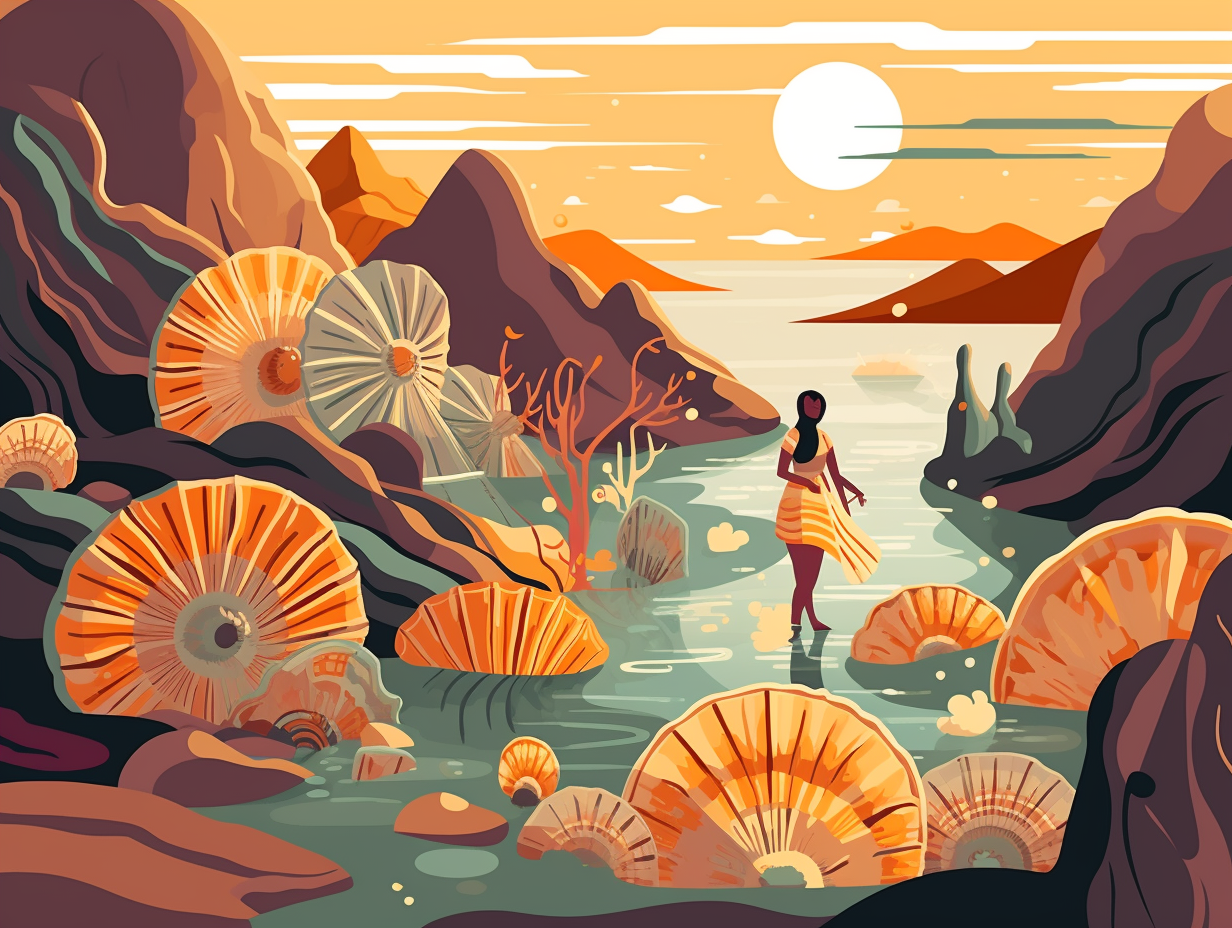
Did you know the Late Ordovician period began as a tropical paradise but ended in a devastating mass extinction? Dive into the intriguing history of this geological Monday and discover how it became one of Earth's "big five" mass extinction events. 🌴🌊💥
=> Fun Facts about The-Ordovician-Period
3. Plankton Buffet Party
Picture an underwater buffet where the early creatures of the sea grazed in style, indulging in a never-ending smorgasbord of tasty plankton for their gastronomic delight: Back in the Cambrian period, the oceans were swarming with these planktonic delicacies, creating a complex food web for marine organisms like Tamisiocaris borealis – a pioneering filter feeder that employed feathery headgear to ensnare its microscopic morsels, painting a vivid image of a rich and diverse oceanic ecosystem.
Source => ocean.si.edu
4. The Peep Show of Evolution
Who needs night vision goggles when you've got 16,700 lenses in each eye? The Cambrian period was a regular peep show extravaganza: Around 541 million years ago, the evolution of vision exploded, giving birth to an array of colors, body forms, and lifestyles among animals. Fossils of arthropods like Fuxianhuia protensa show they had complex visual systems with bilateral symmetry and projecting lobes, while Anomalocaris boasted compound eyes with immense visual acuity, making it one terrifying predator.
Source => nhm.ac.uk
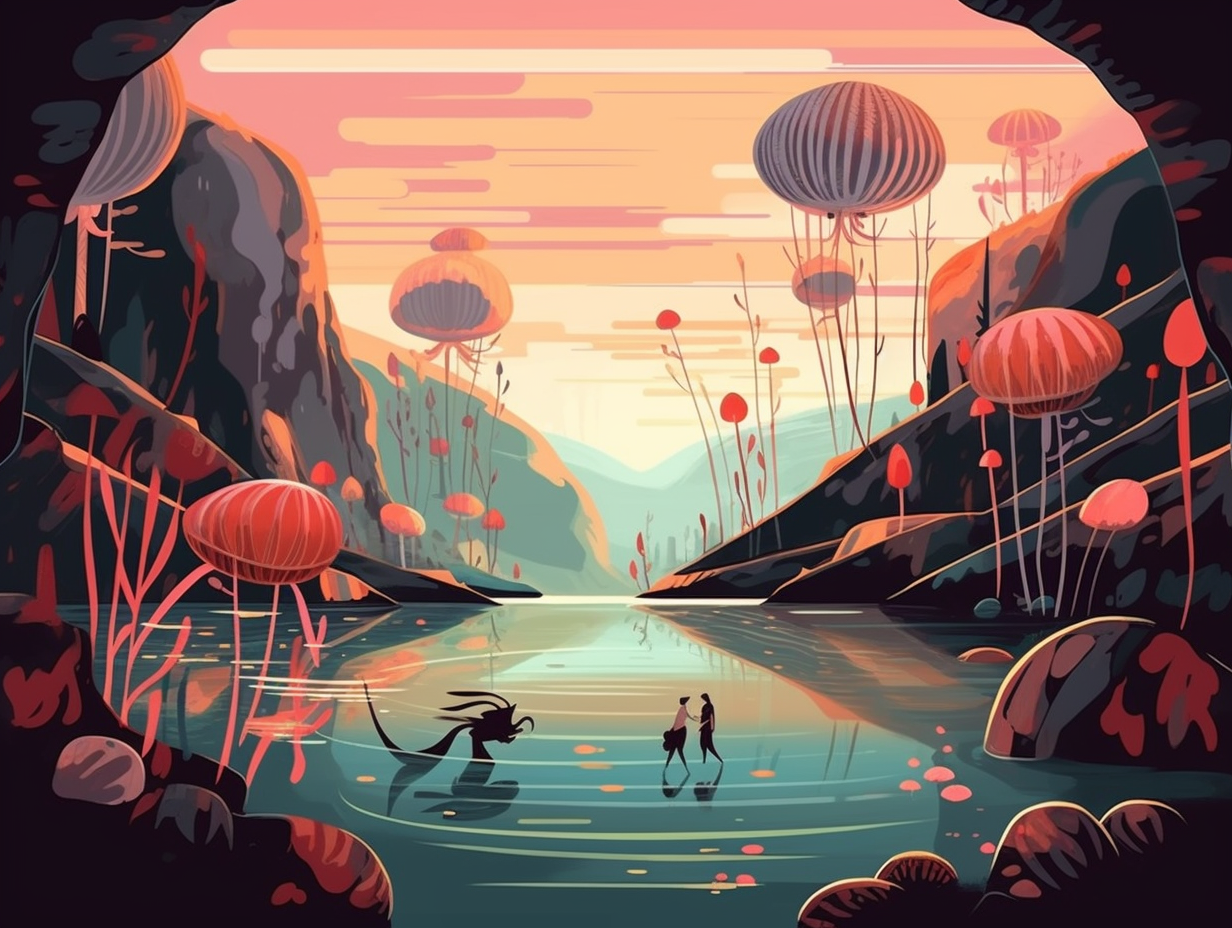
5. Spider-Man's Wild Ancestors
Before Spider-Man could swing through the streets of New York, his great-great-great grandparents threw some wild underwater parties with horseshoe crabs and eurypterids: The earliest known arachnids weren't terrestrial spiders, but marine chelicerates from the Cambrian period, with their lineage dating back to the Miaolingian Series and late Ordovician periods, showing that today's arachnids have even more ancient origins.
Source => frontiersin.org
6. Swiss Army Critter Opabinia
Talk about a Swiss Army knife of nature: Opabinia, a quirky Cambrian critter, sported a clawed proboscis on its head perfect for wiggle-worthy seafloor food scavenging, five stalkerish eyes, and a show-stealing fan-shaped tail. But fear not, this oddball was just another member of the basal arthropods family, hanging out with its radiodont and gilled lobopodian pals.
Source => en.wikipedia.org
7. Land-Loving Fish
In the Cambrian Period, not every fish was out of water: evidence from sedimentary rocks reveals that there were indeed non-marine organisms, including fungi, algae, and agnathans – bottom-dwelling jawless fish with bony skeletons – living on the land during this time.
Source => nps.gov
8. Shell-a-brating Sea Creatures
Hold on to your shell phone, because ancient sea creatures in the Cambrian Period were seriously shell-a-brating! Some of them even invented "shelly" fashion trends: Communities of invertebrates like trilobites, archaeocyathids, and hyolithids adorned their soft bodies with hard shells and exoskeletons. These early Cambrian fashionistas are often discovered through "small shelly fossils," petite fragments of their chic ensembles. One of the trending pieces was the Acrothele, an inarticulate brachiopod found in the Wheeler Shale of Utah - talk about a timeless classic!
Source => ucmp.berkeley.edu
9. Rodinia: The Breakup of the Century
Move over, Pangaea, there's a new supercontinent in town: Once upon a time, during the wild Cambrian era, the colossal landmass Rodinia took center stage, hosting the almighty breakup that made your favorite boy band's split seem like child's play. Here's the lowdown: Around 750-700 million years ago, Rodinia cracked open to reveal the Puncoviscana Ocean, which separated Laurentia from western Amazonia, followed by a double whammy at 590 million years ago when the Iapetus Ocean branched out and divided Laurentia and Baltica, ultimately setting the stage for the captivating world we know today.
Source => sciencedirect.com
Related Fun Facts


